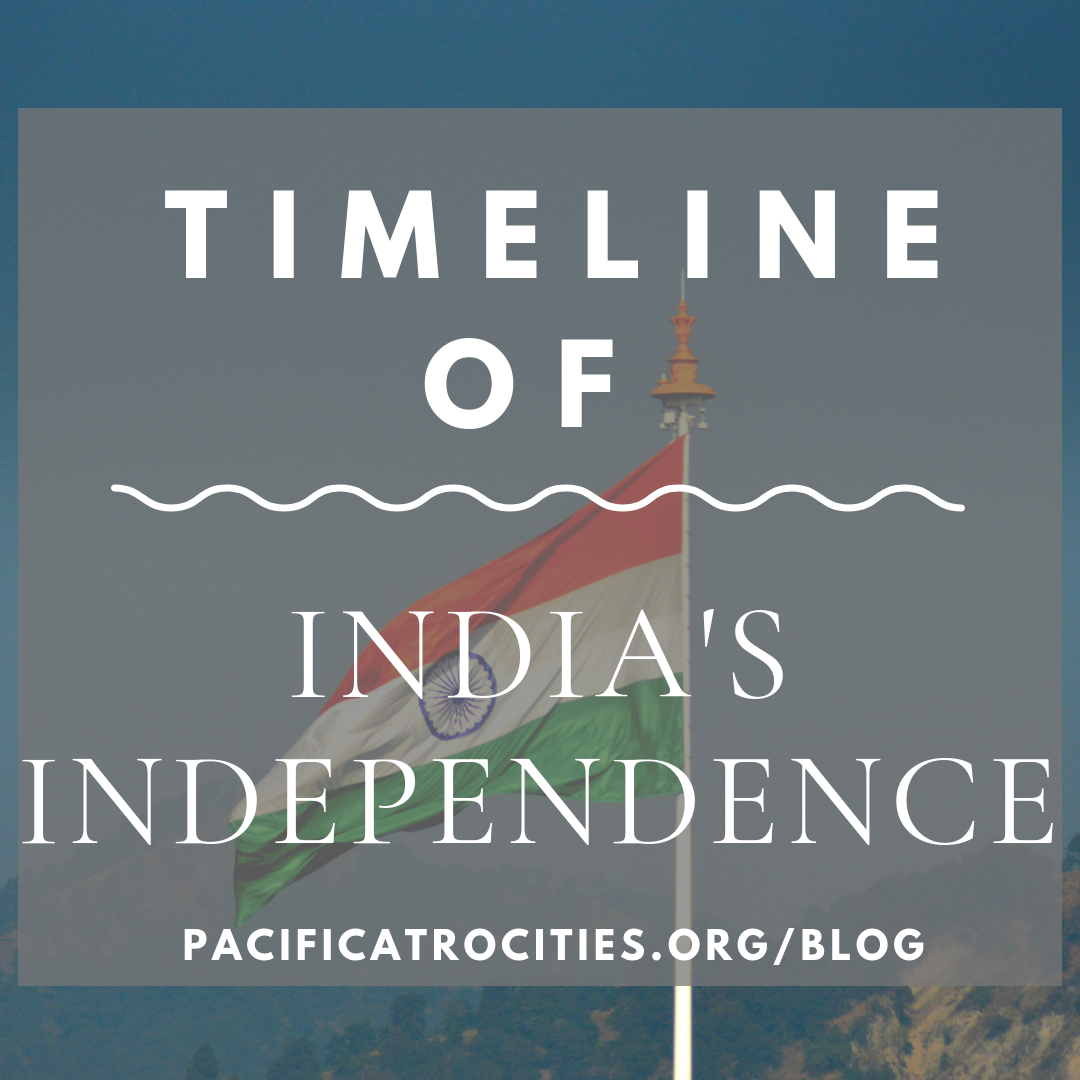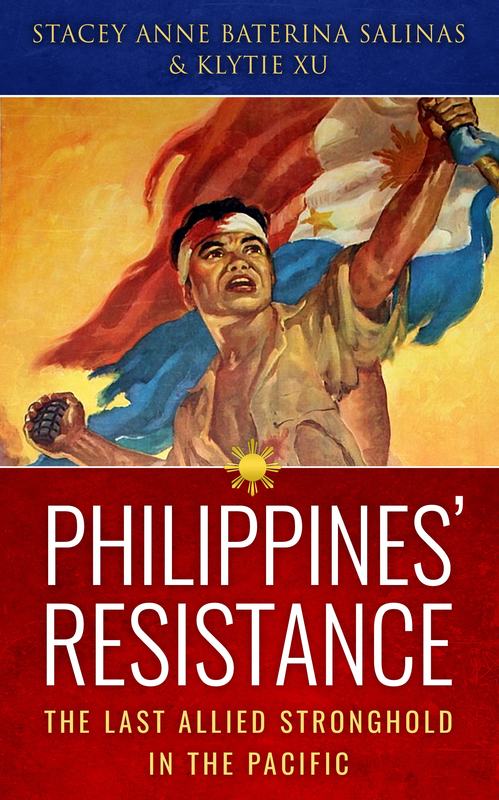|
by Luke Diep-Nguyen
1857 - Establishment of the Indian Independence Movement of 1857 which would last until the eventual Indian independence in 1947. It started with the Indian Mutiny of 1857 which was a revolt led Indian soldiers against the British.
1857 (continued) - The revolt would lead to the joining of anti-British Indian leaders and follow by many Indian citizens. Battles would spread across India, but would eventually lead to the British victory over the Indians. This conflict would be known as the First War of Indian Independence and lasted from May 10, 1957, with the Indian Mutiny to the final battle at Gwalior on June 20, 1858.
1858 - Following the end of the Indian rebellion in 1858, the Dutch East Indian Company was disbanded and Queen Victoria of Britain decided to strengthen British rule over India by proclaiming that India would be governed under the name of the British Monarch. India, under the British General Governor, or Viceroy, would have all their internal affairs, policies, and government under the British with the Viceroy speaking for Queen Victoria who claimed the new title of Empress of India. 1885 - In response to the rise of British power over India, an Indian mass movement, organized by Indian reformists, was created and was known as the Indian National Movement. This would lead to the creation of the Indian National Congress under these reformists. The founders would hold the first session of the Indian National Congress. These founders included reformists such as Allan Octavian Hume. Badruddin Tyabji, W. C. Bonnerjee, Surendranath Banerjea, Pherozeshah Mehta, and Manomohun and Lalmohan Ghose, all of whom had been educated in London. They would also work to publish an Indian magazine called India, discussing Indian news to the British press and politicians to discuss the mistreatment of Indians. The Indian National Congress would gain arguably their most influential figure in the 1920s, Mohandas Karamchand Gandhi. 1919 - On April 13, General Reginald Dyer and a police force fired into a protest rally of Punjab people against the British Indian Government and killed hundreds of unarmed men, women, and children. This would be known as the Jallianwala Bagh Massacre, named after a public garden in Punjab. 1920 - In September of 1920, Mohandas Gandhi formed the Non-Cooperation Movement. The Non-Cooperation Movement was launched in response to the Jallianwala Bagh Massacre and lead to the withdrawal of national cooperation and support for the British government and authorities. The movement was able to gain support from the Indian masses of millions. 1927 - The Non-Cooperation Movement was not only successful in gaining support, but also put a brake on political activities. In 1927, the British Government sent the Simon Commission to assist in reforming the Indian governments. The Simon Commission did not have any Indian members which led to both the Congress and Muslim League to protest and boycott the Commission. 1929 - On December 1929, Gandhi led a mass civil disobedience movement which was to cause total national disobedience towards the orders of the British rule. To suppress their movement, the British government resulted in violence and killed thousands of Indian civilians. The movement would be suppressed and three members of the Indian National Congress would be arrested and later hanged. 1942 - 1945 - Amid the Second World War, there both peaceful and militaristic anti-British movements some of which included cooperation with Japanese to help force out the British. In 1942, Gandhi launched the Quit India Movement which was another mass civil disobedience movement that called for British to be forced out of India via mass violence against railway stations, government buildings, telegraph offices, and other colonial institutions which stemmed the British ability to operate in India. The movement was forcibly suppressed with many political leaders and members of the Congress being arrested. While the Quit India Movement and Indian National Congress worked from within India to push for the removal of British colonialism, many attempted to work from without India to assist in the removal of British rule. Netaji Subhash Chandra Bose, who left India after escaping a detention center in Calcutta, established the Indian National Army. The Indian National Army worked with the Japanese to fight against colonialism. They viewed Western colonialism as a greater threat than Japanese imperialism, therefore siding with them to fight against the British. After the war, when Japan lost, Bose planned to escape but was killed because of an airplane crash. 1947 - After the war, the Labour Party took office in Britain under Prime Minister Clement Richard Attlee. The Labour Party and Attlee sympathized with the Indian movements for freedom. On August 14, 1947, India would be granted its independence. Reference: "Indian Freedom Struggle (1857-1947) - Culture and Heritage - Know ...." https://archive.india.gov.in/knowindia/culture_heritage.php?id=5. Accessed 25 Aug. 2019. Related Books
16 Comments
Mdnemperor
10/19/2019 05:36:09 am
Gud....helped me a lottttttttttt....
Reply
12/18/2019 10:17:16 am
It's a good passage for studying about struggle and freedom in india.
Reply
yo yeh
1/18/2020 03:12:49 am
very helpful
Reply
sam
2/4/2020 05:23:43 am
Here is a great book on Indian freedom fighters: https://www.amazon.in/BAGHA-JATIN-Indian-Freedom-Fighters-ebook/dp/B07H74D7KR/ref=sr_1_2?crid=35FOXNBXC7L3K&keywords=bagha+jatin&qid=1580820301&sprefix=Bagha+Ja%2Caps%2C257&sr=8-2
Reply
Irfan
3/11/2020 10:16:50 am
Nice and very helpful
Reply
apk
8/29/2020 03:44:23 am
goooood
Reply
2/13/2021 12:07:12 am
You understand your customers better than anyone. Batbird knows that, and it can help you turn that knowledge into results. The company will help you refine an online brand experience that showcases the power of your business.
Reply
2/15/2021 01:08:52 am
Dime app Sports is a sports technology company with brands such as Dime app, FanCode, Dime appX, Dime appSetGo and Dime appPay in its portfolio. Dime app Sports is executing its vision of ‘Make Sports Better’ by providing multiple avenues for fans to deeply engage with the sports they love through fantasy sports, content, commerce, experiences and events, among others.Dime app provides a fantasy gaming platform for multiple sports such as cricket, football, basketball, kabaddi, hockey, volleyball, handball and baseball. It is an online game where users create a virtual team of real-life players and earn points based on the performances of these players in real matches.
Reply
10/2/2022 09:25:25 am
What an exquisite article! Your post is beneficial right now. Thank you for sharing this informative one. If you're looking for a money-making app, download this link https://bit.ly/3MSDRA9
Reply
cdxsz
5/1/2024 07:33:14 am
nhbtgrvfcedxwsa
Reply
Leave a Reply. |
- Home
- Stories
-
Internship
- Summer 2024 Internship
- Summer 2023 Internship
- Fall 2022 Internship
- Summer 2022 Internship
- Summer 2021 Internship
- Fall 2020- Spring 2021 Internship
- Summer 2020 Internship
- Fall 2019 Internship
- Summer 2019 Internship >
- School Year 2018-2019 Internship
- Summer 2018 Internship >
- Fall 2017 Internship
- Summer 2017 Internship >
- Books
- Archives
-
Resource Page
-
Supplementary Research Guides
>
- Unit 731 - Guide >
-
Philippines' Resistance - Guide
>
- Philippines World War II Timeline
- The Japanese Invasion & Conquest of the Philippines
- Bataan Death March
- Formation of Underground Philippines Resistance
- Supplies of the Guerrilla Fighters
- The Hukbalahap
- Hunter's ROTC
- Marking's Guerrillas
- United States Army Forces in the Philippines of Northern Luzon (USAFIP-NL)
- The Aetas
- Chinese and Filipino-Chinese Nationalist Guerrilla Units
- The Female Faces of the Philippine Guerrillas
- Rising Sun Flag - Guide >
- Pinay Guerrilleras - Guide >
- Fall of Singapore - Guide >
- Three Years and Eight Months - Guide >
- Siamese Sovereignty - Guide >
- The Khabarovsk War Crimes Trial - Guide >
- Unit 731 Cover-up : The Operation Paperclip of the East - Guide >
- Marutas of Unit 731 - Guide >
- Prince Konoe Memoir - Guide >
- Competing Empires in Burma - Guide >
- Battle of Shanghai - Guide >
- Ishi Shiro - Guide >
- Taiwan The Israel of the East - Guide >
- Seeking Justice for Biological Warfare Victims of Unit 731 - Guide >
- Rice and Revolution - Guide >
- Clash of Empires - Guide >
-
Hunger for Power and Self-SufficiencyI - Guide
>
- The Influence of War Rations on Post-War Culinary Transformations
- How World War II Complicated Food Scarcity and Invention
- American Military Innovations
- Government-Sponsored Food Inventions in Europe during World War II
- Feeding the Army: The Adaptation of Japanese Military Cuisine and Its Impact on the Philippines
- Mixed Dishes: Culinary Innovations Driven by Necessity and Food Scarcity
-
Denial A Quick Look of History of Comfort Women and Present Days’ Complication - Guide
>
- The Comfort Women System and the Fight for Recognition
- The Role of Activism and International Pressure
- The Controversy over Japanese History Textbooks
- The Sonyŏsang Statue and the Symbolism of Public Memorials
- Activism and Support from Japanese Citizens
- The Future of Comfort Women Memorials and Education
- Echoes of Empire: The Power of Japanese Propaganda - Guide >
- Lesson Plans >
-
Supplementary Research Guides
>
|
Pacific Atrocities Education
730 Commercial Street San Francisco, CA 94108 415-988-9889 |
Copyright © 2021 Pacific Atrocities Education.
We are a registered 501 (c)(3) charity. |
- Home
- Stories
-
Internship
- Summer 2024 Internship
- Summer 2023 Internship
- Fall 2022 Internship
- Summer 2022 Internship
- Summer 2021 Internship
- Fall 2020- Spring 2021 Internship
- Summer 2020 Internship
- Fall 2019 Internship
- Summer 2019 Internship >
- School Year 2018-2019 Internship
- Summer 2018 Internship >
- Fall 2017 Internship
- Summer 2017 Internship >
- Books
- Archives
-
Resource Page
-
Supplementary Research Guides
>
- Unit 731 - Guide >
-
Philippines' Resistance - Guide
>
- Philippines World War II Timeline
- The Japanese Invasion & Conquest of the Philippines
- Bataan Death March
- Formation of Underground Philippines Resistance
- Supplies of the Guerrilla Fighters
- The Hukbalahap
- Hunter's ROTC
- Marking's Guerrillas
- United States Army Forces in the Philippines of Northern Luzon (USAFIP-NL)
- The Aetas
- Chinese and Filipino-Chinese Nationalist Guerrilla Units
- The Female Faces of the Philippine Guerrillas
- Rising Sun Flag - Guide >
- Pinay Guerrilleras - Guide >
- Fall of Singapore - Guide >
- Three Years and Eight Months - Guide >
- Siamese Sovereignty - Guide >
- The Khabarovsk War Crimes Trial - Guide >
- Unit 731 Cover-up : The Operation Paperclip of the East - Guide >
- Marutas of Unit 731 - Guide >
- Prince Konoe Memoir - Guide >
- Competing Empires in Burma - Guide >
- Battle of Shanghai - Guide >
- Ishi Shiro - Guide >
- Taiwan The Israel of the East - Guide >
- Seeking Justice for Biological Warfare Victims of Unit 731 - Guide >
- Rice and Revolution - Guide >
- Clash of Empires - Guide >
-
Hunger for Power and Self-SufficiencyI - Guide
>
- The Influence of War Rations on Post-War Culinary Transformations
- How World War II Complicated Food Scarcity and Invention
- American Military Innovations
- Government-Sponsored Food Inventions in Europe during World War II
- Feeding the Army: The Adaptation of Japanese Military Cuisine and Its Impact on the Philippines
- Mixed Dishes: Culinary Innovations Driven by Necessity and Food Scarcity
-
Denial A Quick Look of History of Comfort Women and Present Days’ Complication - Guide
>
- The Comfort Women System and the Fight for Recognition
- The Role of Activism and International Pressure
- The Controversy over Japanese History Textbooks
- The Sonyŏsang Statue and the Symbolism of Public Memorials
- Activism and Support from Japanese Citizens
- The Future of Comfort Women Memorials and Education
- Echoes of Empire: The Power of Japanese Propaganda - Guide >
- Lesson Plans >
-
Supplementary Research Guides
>




